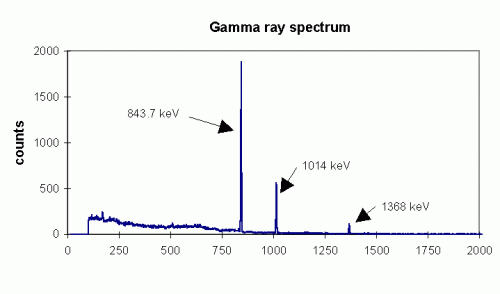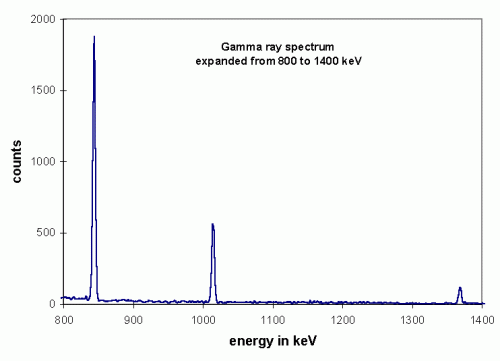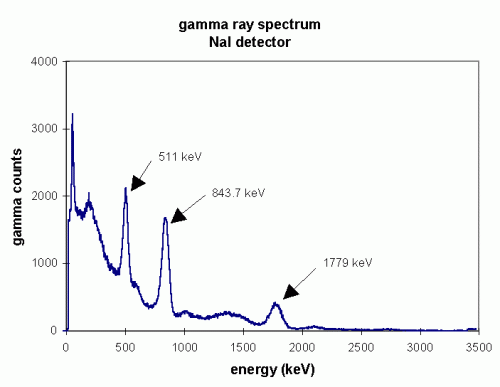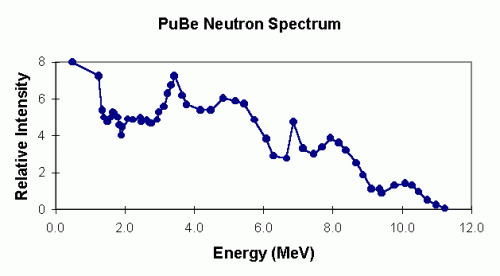Gamma Ray Spectra
Gamma Ray Spectra
An aluminum sample was bombarded with mono energetic 14.1 MeV neutrons. The resulting gamma ray spectrum was obtained by a High Purity Germanium (HPGe) detector after the activation and is shown below.


Note that there is no 1779 keV peak produced by the 27Al + n = 28Al capture reaction. However, peaks from the 27Al(n,a )24Na and 27Al(n,p)27Mg reactions are easily seen in the HPGe detector spectrum.
In general, the number the gamma rays emitted by the activated aluminum sample is determined by several factors. Some of the factors are fixed by nature, such as the reaction, the neutron capture cross section, the half life, the efficiency of the detector, and the branching ratio of the gamma ray transitions in the decay products. Others may be changed in the experiment, such as the radial position of the sample from the neutron source, the mass of the activation sample and the counting time. The neutron capture threshold energy is another important factor. In the 27Al(n,a )24Na and 27Al(n,p)27Mg reactions thermal or low energy neutrons do not activate the sample. While in the 27Al + n = 28Al capture reaction the cross section is large (12 barns!) for thermal neutrons. Hence the peak is seen in the NaI detector spectrum and not the HPGe detector spectrum. Shown below are plots of the neutron capture cross sections for the 27Al(n,a )24Na and 27Al(n,p)27Mg reactions.
The NaI detector spectrum shown below was produced using a NaI detector measuring gamma rays emitted by an activated aluminum sample (note the reduced resolution of the NaI detector compared to the HPGe detector).

The aluminum sample in this experiment was activated with neutrons produced from a PuBe (plutonium-beryllium) source. (This is unlike the monoenergetic14.1 MeV neutron activation resulting in the HPGe detector spectrum). The PuBe source produces neutrons ranging in energy from .025eV (thermal neutrons) to 11 MeV neutrons (shown on the next page). The PuBe source was immersed in water which thermalized the higher energy neutrons, and further increased the likelihood of the 27Al + n = 28Al capture reaction. This occurs because the 27Al + n = 28Al reaction has a large thermal neutron cross section. Thus the 1779 keV peak produced by this capture reaction is seen in the NaI detector spectrum and not in the HPGe detector spectrum
